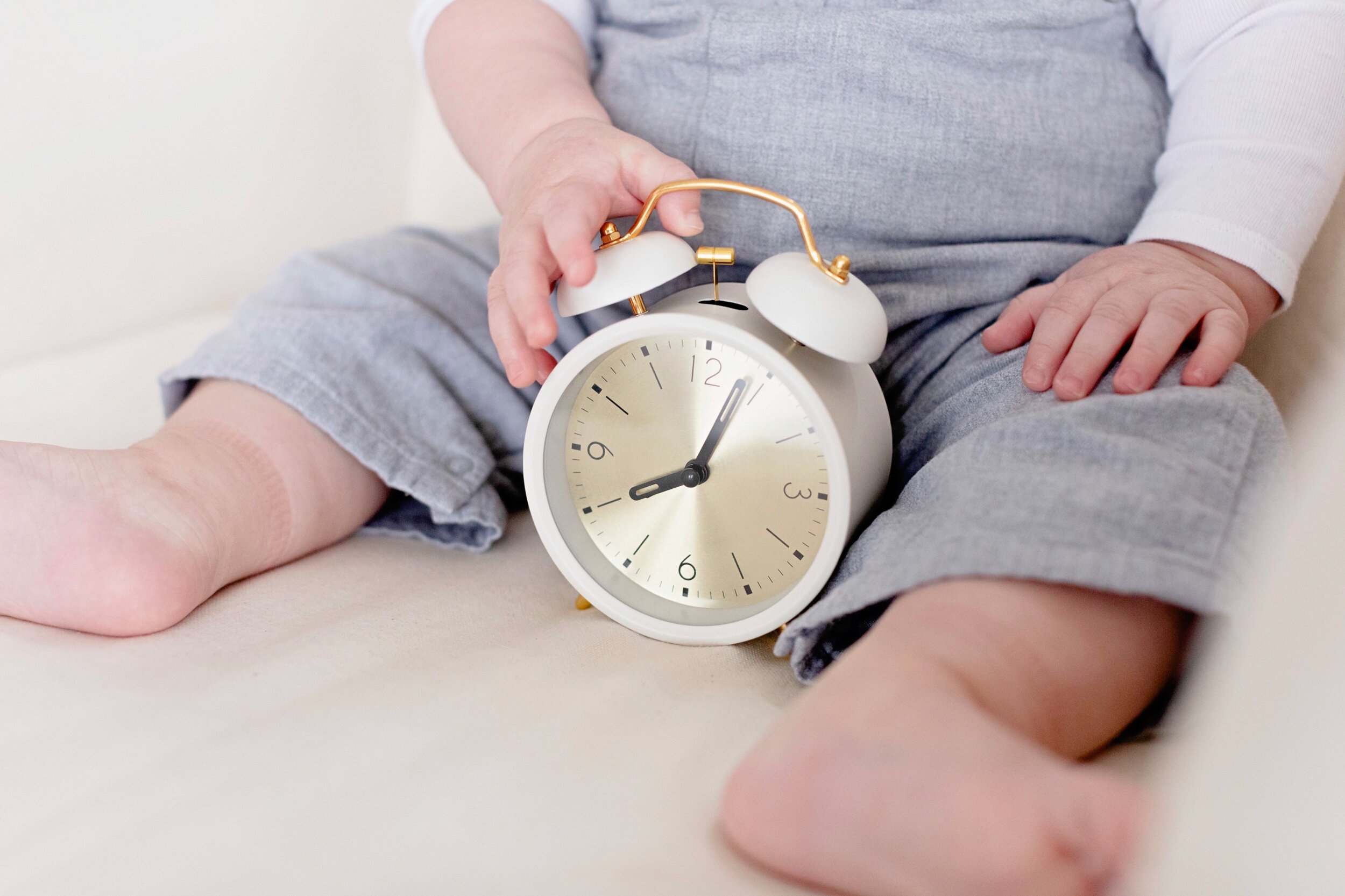Awake Windows & Why I Do Not Recommend a Set Sleep Time Schedule
If you are anything like us prior to becoming a sleep consultant then maybe you believe that the longer you keep your baby or toddler awake, the longer they will sleep. Sounds logical, right? Unfortunately this just isn’t the case. In reality what happens if you keep your child awake much longer than age appropriate, is they will get overtired and this is can result in a spike in cortisol production. Cortisol makes it more difficult for baby to settle to sleep and more challenging to link sleep cycles and have a nice long stretch of sleep.
Timing
Timing is key when it comes to successful naps and overnight sleep. While your baby is young, getting the timing right can mean the difference between an easy settle and great stretch of sleep and a difficult settle and short sleep.
If we could give just one piece of advice when it comes to improving your little ones sleep - and keeping sleep on track as your little one grows - it would be to adhere to age appropriate awake windows.
An awake window is simply a fancy name for the amount of time your baby is awake between naps and before bed. This includes feeding time and the time it takes your little one to fall asleep. As your little one grows, so does the amount of time that they can happily stay awake for.
If you find that your baby is taking short naps, fighting sleep, resisting bedtime, waking frequently overnight or starting their day at the crack of dawn the first thing we would recommend checking is their awake windows.
Suggested Awake Times by Age
Although it may take some trial and error to find the correct awake times, it is worth the effort. An infant or toddler that sleeps in line with their age appropriate awake windows generally sleeps better and therefore is happier and more content.
If your child is napping well, happy during their awake times and settling to sleep relatively easily then you have likely nailed their awake window.
To help guide you, below we have provided appropriate awake lengths by age. You will notice that we have provided a bracket (e.g 60 – 90 minutes). This is for a couple of reasons:
Every baby is different and can tolerate different awake times.
An infant that has just reached 6 months might only be able to tolerate 2 hours awake max, where as an infant closer to 7 months may be able to tolerate up to 2.5 hours.
Your little ones awake window will likely differ throughout the day. It is really normal for the first awake window of the day to be shorter than the rest. After a good length nap your child might be able to tolerate the higher end of the bracket, where as after a short nap the lower end might be a better fit.
Suggested Awake Windows
0-8 weeks: 45 - 75 mins
8 weeks - 4 months: 60 - 90 mins
4 months: 1.5 - 1.75 hours
5 months: 1.5 - 2.25 hours
6 month: 2 - 2.5 hours
7 months: 2.25 - 2.75 hours
8 months: 2.25 - 3 hours
9 months: 2.5 - 3 hours
10 months: 3 - 3.5 hours
11 - 12 months: 3 - 3.75 hours
12 - 15 months: 3 - 4 hours
Set Sleep Times vs Awake Window Schedule
We do not recommend on working on a set sleep time schedule, at least until your child is down to one nap a day. In our experience, they just don’t work. Instead, we suggest using awake windows to set your schedule.
Let us provide an example of why we find set nap times do not work. Here is one example schedule we found for a 6 month old baby:
7am – Morning Wake
9am – Nap 1
12:30pm – Nap 2
4:30pm – Nap 3
7pm - Bedtime
Now say your child woke for the day at 6am and wouldn’t return to sleep. By the time they get to nap 1 at 9am they are going to be overtired and this will likely result in a short 30 minute nap, ending around 9:30am. The schedule instructs nap 2 doesn’t begin until 12:30pm. This means your bub is going to be awake for 3 long hours before sleeping again. In our experience this is going to result in one grumpy bub and yet another short nap ending around 1pm, before another long awake window prior to nap 3. Now your baby has only had 1 hour of sleep all day and is exhausted, so you put then down for nap 3 at 4:30pm as indicated and they sleep for 2 hours out of pure exhaustion. Good luck getting your baby to sleep for the instructed 7pm bedtime.
This is a perfect example as to why we advise working on an awake time schedule as opposed to a set sleep schedule. Babies are not robots. They do not wake at the same time every day. Naps are not always the same duration. Baby won’t always settle to sleep at the same time. More often than not set sleep schedules result in an overtired baby or having to wake a peacefully sleeping bub simply to adhere to a schedule.
Do you want sample feed, sleep and meal schedules taking you from 1 month through to 5 years of age? Grab our Scheduling Guide and you’ll never have to guess about awake times or sleep windows again 🙌🏻
Jaci xx

